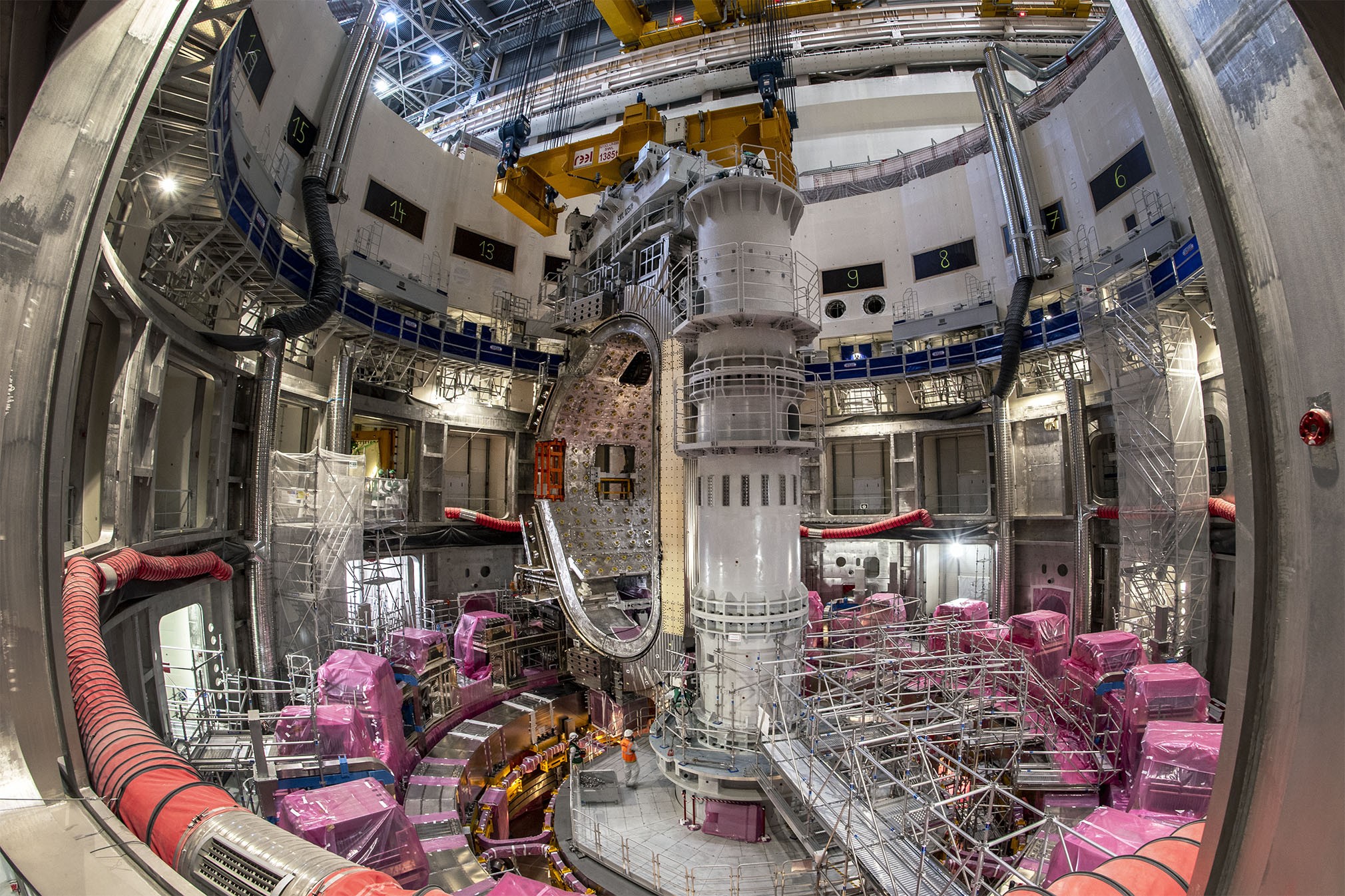 A key component of the International Thermonuclear Experimental Reactor (ITER), under construction in France has been removed for essential repairs. The first of nine sector modules that will comprise the tokamak torus, which was installed in the assembly pit in May 2022, has now been removed in a reverse operation.
A key component of the International Thermonuclear Experimental Reactor (ITER), under construction in France has been removed for essential repairs. The first of nine sector modules that will comprise the tokamak torus, which was installed in the assembly pit in May 2022, has now been removed in a reverse operation.
ITER's plasma chamber (torus) – the vacuum vessel where fusion reactions take place – will be formed from nine wedge-shaped steel sectors that measure over 14 metres in height and weighs 440 tonnes. The sector sub-assembly tools – each about 22 metres in height and weighing around 860 tonnes – are designed to support the weight of one vacuum vessel sector, two toroidal field coils and silver-coated thermal shields, which together weigh around 1,200 tonnes. The first full sector sub-assembly, which was installed in May 2022, comprised the double-walled vacuum vessel sector, a tightly fitted thermal shield and two D-shaped vertical superconducting electromagnets called toroidal field coils.
The 1350-tonne module was lifted back out of the assembly pit after dimensional non-conformities were observed in the vacuum vessel sector's bevel (welding joint) region. This, combined with corrosion-induced cracks in thermal shield piping, meant that the module had to return to tooling in the Assembly Hall for disassembly. ITER noted that, although not foreseen in the original specifications of the assembly tools, the reverse lift operation was performed successfully using the same equipment.
Detaching the module from its moorings in the assembly pit and lifting and transporting it to the sub-assembly tool required more than 100 different steps. These had to be defined, validated and integrated into the lift procedure. The reverse lift took almost four days, excluding advanced preparation activities. ITER explained that this did not simply consist of reversing the installation, which had taken place more than a year before. Procedures had to be adapted and additional guiding systems had to be manufactured and installed. "A lift-off is not exactly a reverse landing," said Daniel Coelho, the ITER assembly engineer who coordinated the operation.
The extraction began with a "pre-lift" that raised the load a few centimetres from its landed position. To carry out the complex succession of moves involved in the procedure – lifting, rotating, advancing, rotating, advancing, lowering – it was essential to determine with utmost precision the relative position of each of the elements involved. These included the load itself, the overhead crane's complex rigging and the tool support systems at the receiving end.
Just as, during the May 2022 installation operation, one of the main challenges was to determine the load's centre of gravity. "The module is of a composite nature. When sitting in the pit, the vacuum vessel and the toroidal field coils are not mechanically connected," explained Coelho. "It's only during the lifting phase that, thanks to the bracing tools that attach vacuum vessel and coils together, they become one homogeneous load with a common centre of gravity."
Lessons learned in 2022 were essential to success of the operation. "We have made considerable progress in terms of alignment accuracy and, what is also very important, we operated with the same team. Everybody knew his/her part perfectly, and coordination among the team members was smooth,” he noted.
The highly sophisticated operation relied heavily on sensors and strategically positioned cameras, but "spotters" also played a crucial part in precision and overall safety. "A sensor will give you an indication. But only the human eye, and the brains to which it is connected, can analyse and understand a situation and take the right decision," said Coelho. During the lifting and landing of the module, around a dozen spotters closely monitored the most difficult parts of the transfer – along the pit's central column, over the separating wall and during the insertion into the sector sub-assembly tool.
Disassembly activities have already started to prepare for the synchronised opening of the tools' wings and the removal of the toroidal field coils, followed by removal of the thermal shield panels. Preparation for repairs will then begin starting with metrology to define the metal build-up and machining zones.
Image courtesy of ITER






